Lately there’s been an increasingly sharp discussion about the pervasive issue of copycatting and influences of work online and in publishing that is both old and new at once. Old in that this is not new and has been around as a push/pull issue forever. New in that it has become much more present and hyper-elevated by the internet and the sharing of work and imagery. So without the hubris of thinking we can solve this definitively today, I thought we should revisit the syndrome and discuss.
We are all of us influenced by those that came before us, all of us. This is not something to be ashamed of or feel we need to hide or mask. It’s evident in all our early work having not yet committed to, or discovered our own voices that we ape those voices that have excited us. There is nothing of harm inherent to this cycle… as long as the cycle cycles forward and beyond it. To be stuck in this mode is no victory and is in itself a cage- but we’ll delve into that more later. When I worked at a gallery in Tribeca for a year or so during my time at Pratt, there was an occasion to be able to show my work to the gallery’s Director, who I had already had a fond relationship with while working there. He was immediately dismissive of the idea because he claimed that any student work was merely a portfolio of pings of the student’s professor’s work or the what was popular at the time, but he did it anyway. I for my part as a mildly self-deluded student could not rectify that attitude towards my work- it being an expression of my singular genius as it must be- and particularly so for his not having seen it as yet to pass such judgment. But now, as a man closer to his age then that I am now, I see how right he was. I look back on that work and all I see is the exact issue he rolled his eyes at- it was of a school of thinking oh so very Pratt-ish at the time… charcoal abstractions executed with oil and roofing tar utilizing biologic forms that were so chic at the time thanks to the popularity of Terry Winters paintings that were all the rage. I don’t look back at them with embarrassment, but with indifference. I look back on my hubris with a mild twinge of shame, but forgive it for the student-youth arrogance that I also think is essential to making our work and fueling us forward. Some students exhibit a strong powerful voice all their own and do so early- I was apparently not one of those students. I know it now, but did not know it then. I was aping my preceding artists without even really knowing it, and presenting it as uniquely my own without really seeing that it was essentially, derivative. Whether it’s the parachute pants we thought were cool, or the crappy music we were sure was genius… it’s all the same thing. A harmless sin of youth that is fun to mock as we grow beyond it. At worst a shrug of forgiveness for being naive when we mistakenly thought we were being awesome.
But… in the professional arena this aping, can be either inadvertently self-depreciating, or capriciously plagiaristic. Neither of which result in anything good for us or our industry. When we forget to check our influences at the door and express ourselves in our own voice professionally, we become another artist’s shadow rather than a solid form standing on our that casts its own shadows. When we do it consciously, we are frauds. Sometimes this act is a business model from companies like Redbubble who actively allow for art theft to squeeze a few bucks out. Sometimes this overt theft and slapping another’s name on a piece of work will even end up in publishing. More often a publisher can and has through a lack of budget, encourage an artist to demean themselves and exploit their influences in order to get close to established artist’s style without having to pay the legit price for hiring that actual artist. Sometimes the artists themselves actively pursue such a course by mistaking their copying of another artist’s style as their own invention, whether conscious or not. There is a danger to this practice, particularly when they enter the professional realms, but for different reasons and for different scales for each arena of plagiarism.
For the Redbubble model, it makes it hard for the legit artist to sell a shirt or print of their own work, when a cheap knockoff is available to get at a third the price. Sure the print is never nearly as good, but most folk don’t care or care to notice and are happy to save a few bucks not realizing it comes at a cost to the very same artist they think they are celebrating by spending money on their work in this way. It’s piracy and while there’s arguments it doesn’t have a grand effect on the pirated artist, it does have an effect and is definitionally cheapening of that artist’s work.
For the publisher induced copycatting, the scale of woe is much more increased because it’s codified in professional terms and on a more legitimate scale and place of action. It cheapens and confuses the way an original artist is seen because if it’s published legitimately, it’s got a stamp of legitimacy that makes its impact more profound to the art. It’s still a cheap effect, but the professionally of that cheapening increases the worst consequences on an exponential scale both for the publisher, the copied artist and especially for the artist hired to copycat them. There was a period of time where Frank Miller was all the rage, but his being expensive and only one man meant he could not necessarily fill the feverish need for Frank Millerness and so young upcoming artists were hired to ape his style. These poor kids did so assuming that they were getting their shot to work for a big comics publisher that was their lifelong dream and that they would later then, having gotten their foot in the door, be drafted for their actual value later. This of course never really happened and not only did most of them never see a career blossom after doing this, they were plagues by having done this in the first place. And when Frank Millerness fell out of fashion, as fashions always do… they were left out in the cold without the tools to survive. It happens time and again with copycats of artists from James Jean, through Yuko Shimizu, Victo Ngai, (whose recent FB posts inspired this article), and beyond. I’ve seen it happen with my own work on a lesser scale, as I am of a lesser presence in the wide cultural conversation, but the result is always the same. And it ain’t good for anyone. My advice to young artists facing this bait is to ignore it and move on. Better to pass on a short run to the top on the drafting success of another than to assume it as THE BIG CHANCE and be branded for it’s inherent copycatness later. It seems from the perspective of the climber that it’s a leg up the mountain, but it’s a false stone that at best leads to an impassable cup de sac, and at worst, leads to a fall. It is not a new phenomenon nor is it going to go away. Save yourself, don’t play and you’ll be better for it later.
If you are someone submitting work for an anthology work, show or art-contest like Spectrum or SOI, or any number of of these things, know that the judges who select these works are either going to be the people you are aping, or they will know those people or at least their works well enough to spot the copycatting right away- and this will undermine your hopes for success in these arenas. It’s not always true as a clean block, and sometimes aped work does get through- but at best it always carries the horrid comment we all loathe: “This art reminds of that artist”. Yes you may have gotten into these forums and gotten printed or even nominated… but it’s a shallow victory. It’s winning by cheating a little and it sours the victory. And if you’ve tasted a victory on your own merits and tasted this flavor of victory, you know exactly what I’m talking about.
Finding your own voice is not easy, and harder for some than it is for others. Some of us are lucky weirdoes with defined ways of seeing and doing, and some of us only find our voice after long and grueling battles with self-doubt and timidity. Our process is our own and we should learn ideally learn to be cool with that. Art is not a competition or race where looking to our left we see runners moving past us and use that as a way to feel like we’re losing. The goal is never the end, but the process of the running. The goal is getting to do it again, and then again. And the definition of being a successful artist should be of your own design, not another’s. For me myself, my mark is being able to do it as a job day in and day out without having to take on another job, like sheet-rocking or working in a record store or whatever, and do so using my own voice wherever I can. The only way to measure that goal for me, is for my ghost to look back on the length of my life, now ended and see that I was was able to keep working and support myself and my family until I no longer worked and found myself on the wrong side of the grass. All I mean by this silly morbidity is to warn against achieving legs up by being a reflection of another artist rather than the reflected self of your own vision. You will have a better chance at a long career if you do, and while you may achieve some short term measure of success by copying a trend-making artist, it will only last as long as the trend does… and that has nothing to do with your value, but the trend itself. And that is hardly a win. For the artist being copied, I agree it largely sucks despite the inherent nod to your success and place in the world to garner such plagiaristic efforts. The best way I think to survive it is to keep inventing, pushing your work forward and not mistake the style you crafted for the art you make. Anyone with enough time or practice can copy a style, but your vision… well that is a hard fish to hold in your hands if its not yours.
*And as a disclaimer, please don’t misunderstand my intentions here: I am not poo-pooing the act of copying artists you love or admire. In fact doing so is a natural process of learning the techniques and tools. Tracing cartoons as a kid, or repainting a Cezanne still life in high school are not sins and should not be eschewed ever as part of the process of growth. Hell I don’t think there’s ever a particular issue with doing so at any time, though I think it is rightfully a rare occurrence in our later lives as we should hopefully no need it as a learning exercise once we establish our selves and our art. This article also ignores the homage on purpose which is neither of these things, and a whole animal unto itself that is not really the same as what is being described above- the main difference being that an image is outwardly declared as such and is a celebration of an original work rather than a sneaky mimic of one. There’s a lot to be learned in copycatting, but only up to a point, and only healthy as long as the act of it is kept sequestered in the process of growth rather than being mistaken for actual growth or achievement. A lot of my early comics were clumsy attempt to reproduce my betters like Dave McKean or Kent Williams or even Jon Muth- there’s even a two page section of my first big GN, SUDDEN GRAVITY that is a clear aping of Muth’s sums brush work I so admired, and still do. We should not expect of ourselves purity and uninfluenced by our peers and those that came before us. I carry my influences proudly now and am always thrilled to see my compatriots surprise me with ways of thinking and art making I too would like to try on. But I do try to make sure, as best as I can, to fold those new ways of seeing into my own vision as opposed to merely reproducing their effect in my work. There is a difference and there should be, so all I ask is that you remain frosty and aware of the dividing line and make your choices consciously. The outcome then is your own, good or ill. And whatever happens you can at least lay claim to full ownership of that choice.


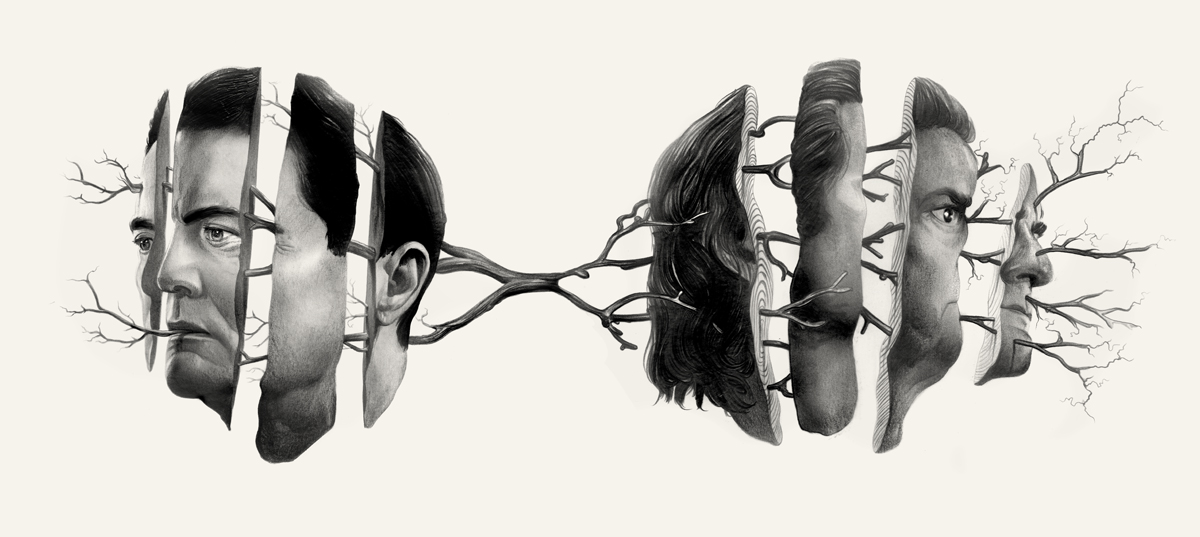

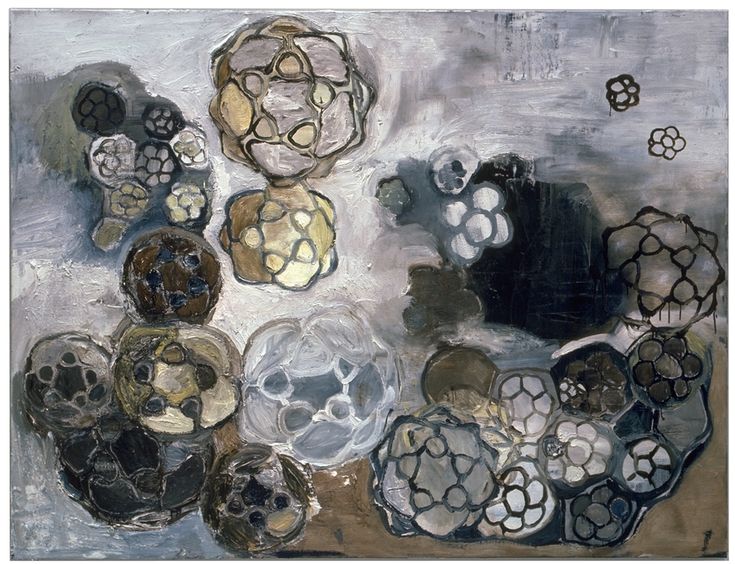
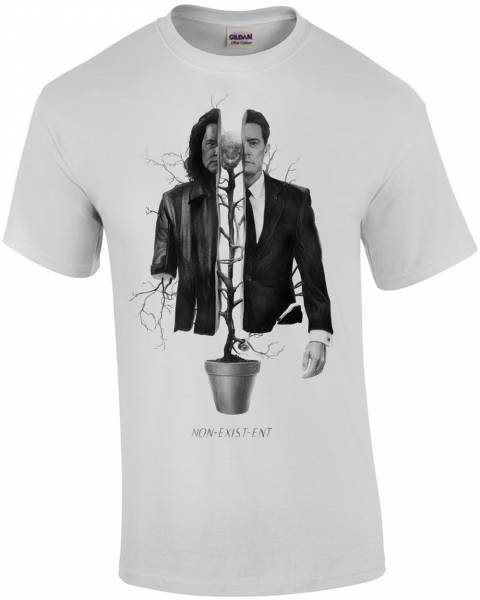

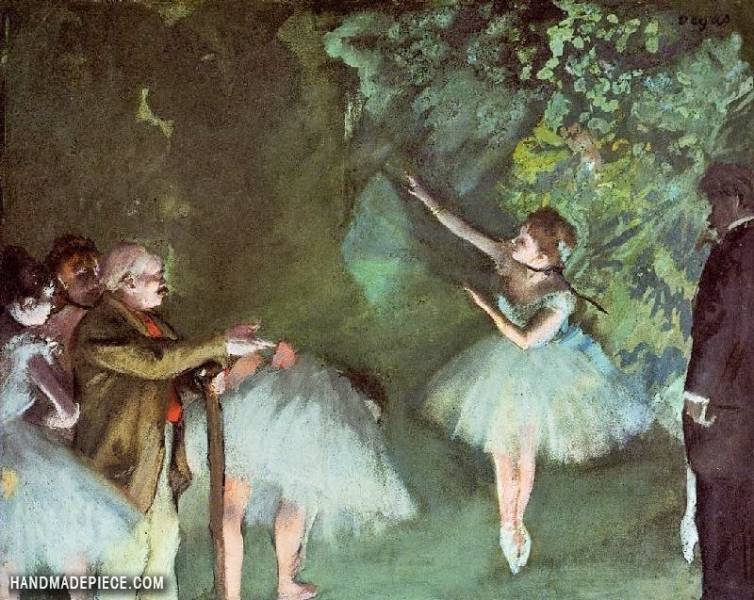
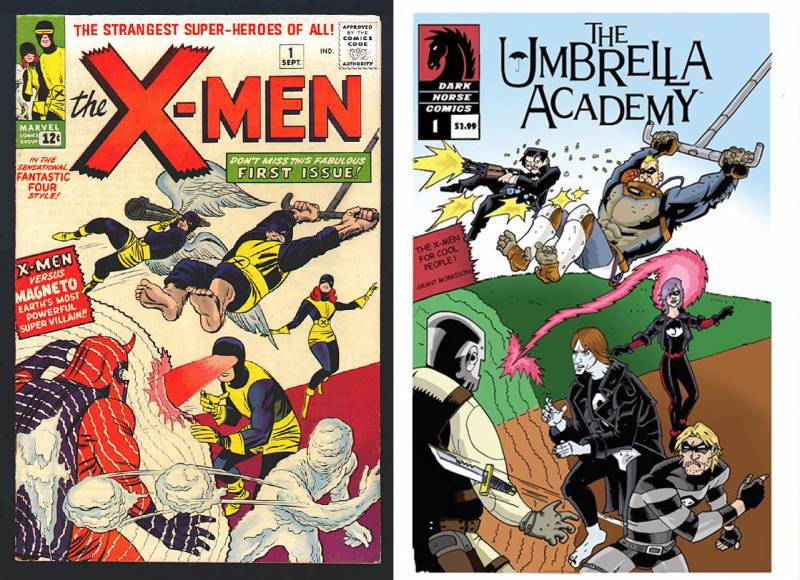
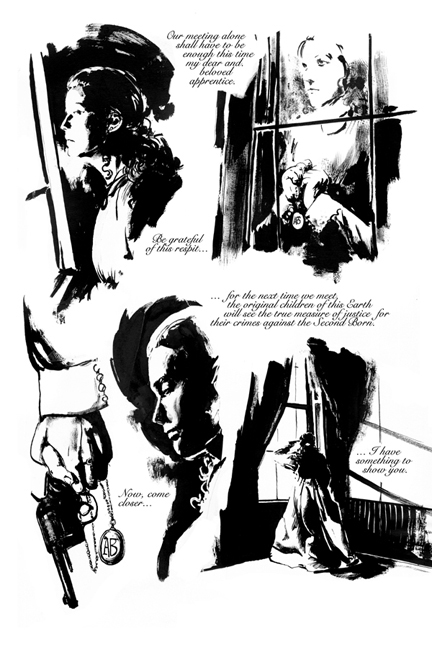
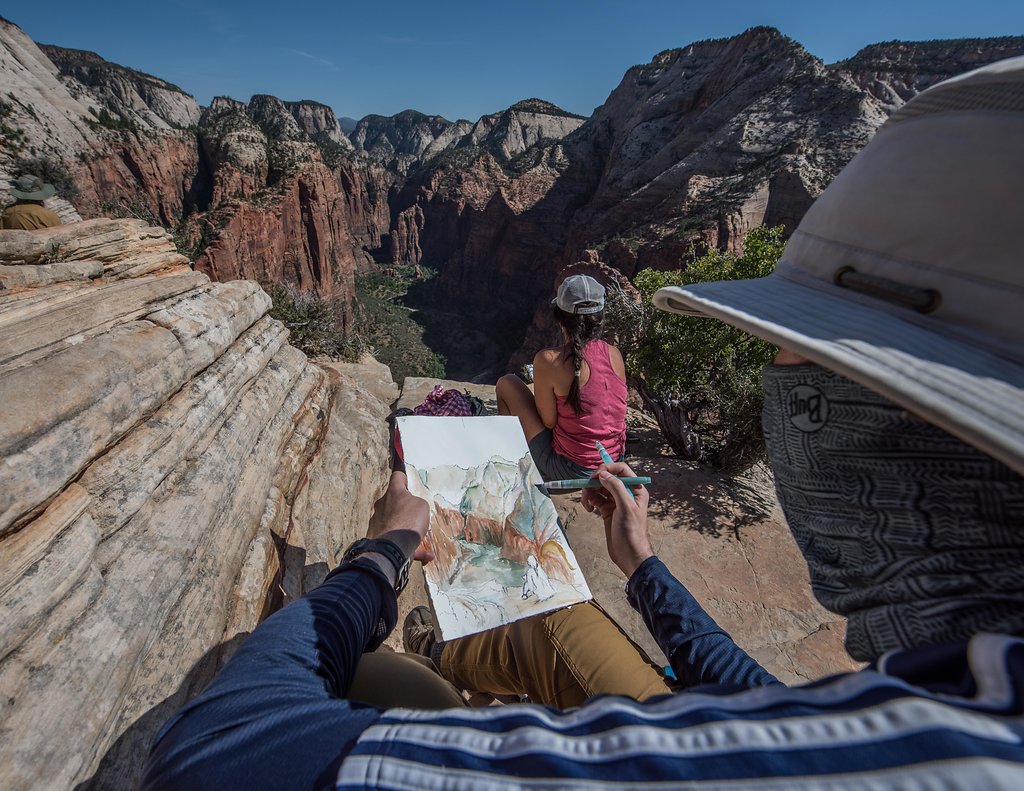
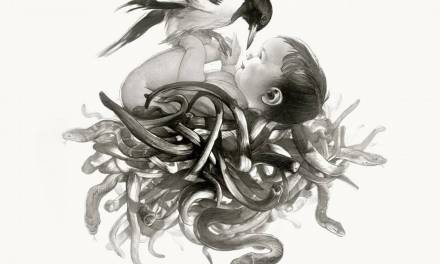
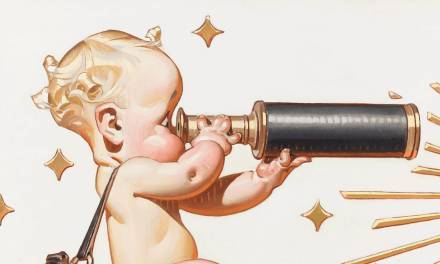
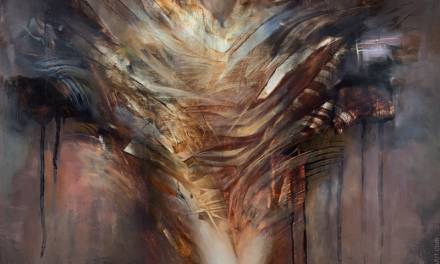
I feel a little guilty reading this article, to be honest. Recently, my own bubble has been popped when an established artist told me my work was derivative of another artist’s work. And in my naivety, I thought that was okay, that it was fine, and worse, I got work from the industry with it. Soon, correspondences led to communication with the artist I admired. I was told to stop using the style as it was his signature. Panic set in and it sent me into a hole I couldn’t climbed out from. I always try to learn from better artists than me, and I thought being a little close to their style is okay because artists influence artists. To my surprise, I was way too close, apparently. In my arrogance, I stepped a line. Now, I’m somehow lost in my journey and I’m more fearful of my pitfalls when I draw. I’ve discovered that because I “aped” someone’s work, it became my most natural or comfortable way to draw. It didn’t help that clients look for it too, clients who didn’t know the original artist whose style I’ve accidentally copied. I’ve halted several projects because of it and I’m back to struggling to find a footing with my work. Each artist is a work-in-progress, I know, but now it seems I have to speed up the process to get out of this copycatting-a-trending-artist phase. I failed to walk away, and now, I feel tainted by the experience; completely losing confidence. Do you have any advice how to grow from the experience? With the experience you mentioned in the footnote, how did you get out of the spell?
Thanks for sharing that, Geoff.
Some of my favorite artists started off ‘aping’ other artists. It’s ok, provided you eventually grow beyond that influence. Make sure that influence is one of many! It’s simply a starting point to finding your own path.
Having influences is like learning a language. What’s important, is the kind of poetry you decide to write with it.
thx